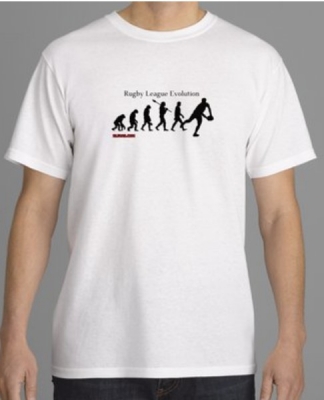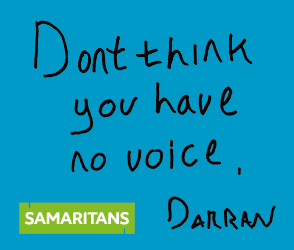2010 Tag Rules & Training : Wed Mar 17, 2010 11:18 am
Now that the 2010 rules have been published I've noticed a few variations to what we're used to on Monday nights. I think it migh be a good idea to start playing to the Tag Rules on training nights as it'll help in tournaments so we don't get caught out. Any thoughts?
I've posted the bits where there are differences to our usual game below along with other clarifications on certain rules.
Tag Rules 2010 – Variations and Clarifications to what we normally play!
1. The captains of the two teams shall toss for choice of ends. The captain winning the toss has the choice of which direction to run and the opposition team will use a place kick from the centre of the field to start the game.
2. Once play has started an attacking player who is on-side can run with the ball, kick it in any direction and throw or knock it in any direction other than towards his opponent’s tryline.
4. The tournament game shall be played by two teams each consisting of at least five (5) players per side. In the case of mixed competitions, the maximum number of male players on the field at anytime is five (5).
6. One (1) point is awarded for a try. In mixed games, if a female player scores a try, that team shall receive two (2) points.
7. Kicks must be re-gathered in the field of play before grounding the ball for a try to be awarded. If the ball crosses the plane of the try-line the ball is deemed out of play.
8. A player cannot pass the ball back after crossing the tryline nor can he/she run back into the field of play to pass the ball back to another player.
9. A player can dive to score a try, however, if this player, in his/her attempt to score a try, touches the ground with the knees or arms before the tryline, or slides across the tryline and a defender is within tagging distance, a try will not be awarded.
10. The marker and the defensive line can only move forward when the ball is touched by the dummy half.
11. A player may defend with one or no tags, however if he/she receives the ball, which has been kicked, dropped or propelled forward, they must immediately play-the-ball at the place of receipt.
12. When a defender deliberately moves into the ball carriers path (without gaining position first) and contact is made, the defender will be judged as initiating this contact.
13. A defending player, must in the referee’s opinion, be attempting to remove a tag and not deliberately impeding the progress of the ball carrier or any attacking player with their body. If an attacking player’s progress is impeded, with or without the ball, a penalty may be awarded.
14. A defender cannot at any time hold onto an attacking player or their uniform. If this occurs and no advantage is gained by the attacking team, a penalty may be awarded.
15. If a defender removes an attackers tag when they are not in possession of the ball, the referee has the following options:-
a) If it is just as the attacker has passed the ball, no action is taken and the attacker must replace the tag before being able to progress the ball downfield, (simultaneous tag/=off load).
b) If it is after the attacker has passed the ball, the Referee should call “Late Tag, Play On” and allow the attacking team to progress the ball with only one or no tags on. This may result in a player scoring with one or no tags on. This is one case of the “Advantage Rule” being applied.
c) If it is after the attacker has kicked the ball, the referee should call “Late Tag, Play On” and allow the attacking team the opportunity to regather the ball. If the referee deems no advantage has been gained by the kicking team (regathers ball, late in tackle count, etc) he should penalise the defending team where the ball stops, crosses the touch line or try line or where the opposition takes possession of the ball.
d) If a defender removes a support players tag before receiving the ball he/she should call “pre tag” and allow the advantage play.
e) If no advantage is gained in b) & c) the Referee should penalise the defender & may consider the use of the sin bin.
A Player with no tags/one tag is deemed to be tagged if a player is simply touched in possession of the ball
16. If there is no marker at the play the ball the ball player may replace his/her tag, play the ball forward by tap kicking the ball on the ground and continue play. If he/she is missing a tag they may only pass or kick the ball taking no more than one (1) step.
17. If the ball carrier falls to the ground, or a player falls on a loose ball, and a defender is within tagging distance, a tag will be deemed to be effected. This applies to the ball carrier when crossing for a try. If any part of the body (other than the feet) of the ball carrier touches the ground before the tryline, and before the ball is placed over the tryline, then a try cannot be awarded if a defender is close enough to effect a tag. The ball carrier will be asked to play-the-ball no more than one (1) metre out from the tryline and the tag count will continue. If this occurs on the last tag, a changeover will be awarded to the defending team.
18. If the ball carrier is “tagged” over the tryline prior to placing the ball down for a try, he/she shall be asked to play-the-ball five (5) metres out from the tryline, and the “tag” count will continue.
19. If any attacking player is “tagged” over the tryline prior to placing the ball down for a try and it is the last tag, a changeover will be awarded to the defending team five (5) metres out from the tryline.
20. The dummy half can pass or kick the ball with only one tag on as long as they only take one step. If he/she should take more than one step, they will be called back to the mark and the next tag will be counted.
21. Simultaneous tag/ball off load situations will usually result in a “play-on” call from the referee and since Tag RL is predominantly an attacking game, the benefit of the doubt will be given to the attacking team.
22. If the dummy half is not in position within three (3) seconds of the play the ball, a changeover will be awarded to the defending team. (Referee will determine this time period).
23. The marker under no circumstances can run around and retrieve the ball from the dummy half position. This will result in a penalty. Safety Reasons
24. If the play the ball is deliberately delayed, the referee will initiate the 3 second play.
ATTACKING INFRINGEMENTS
The referee will award a penalty where the infringement occurred in the following circumstances:-
25. The ball carrier must not attempt to bump or fend off a defender in their attempts to remove a tag or whilst chasing the ball. The ball carrier can in no way protect his/her tag with their hands, elbows, ball etc.
26. The ball carrier must not jump to avoid being tagged, however they may spin/swivel to avoid being tagged as long as they do not initiate contact.
27. In changing direction on the run the ball carrier steps into a defender endeavouring to make a tag. Onus on ball carrier to avoid contact.
28. When an attacking player prevents a defending player from executing a tag by running behind his team mate/s causing an obstruction.
29. When the ball carrier executes a voluntary tag by deliberately playing the ball with both tags intact.
30. When the ball carrier deliberately removes his own tag.
31. When the ball player interferes with the marker at the play-the-ball.
32. A tag will be called if the ball carrier touches or adjusts their tag whilst in possession.
KICKING RULES
A place kick is used to start & restart play. Kicking the ball is allowed in General Play only after the fourth tag.
NOTE: General Play kicks must be no higher than the Referees shoulder height off the boot, however it can bounce higher. No drop-kicks in general play.
1. When a try is scored the scoring team shall kick-off to restart play.
2. The kick-off is a place kick from the centre of the halfway line. The ball from the kick-off must bounce within the field of play before going over the touch or tryline. The ball from the kick-off must travel ten (10) metres before any player of any team may take possession of the ball.
3. If the ball from the kick-off or drop kick bounces over the receiver’s tryline whether touched or not, play will restart with a drop-out from the centre of the tryline by the receiving team.
4. If the ball is caught on the full over the tryline the referee will call “play on”.
DROPOUT KICKING RULES
1. A dropout is a drop kick taken from the centre of the tryline. The ball from a dropout must bounce within the field of play before going over the touch or tryline. The ball from the dropout must cross the ten (10) metre line from the tryline before any player of any team may touch the ball.
2. If the ball from the dropout bounces over the receivers tryline whether touched or not, a dropout from the receivers tryline will be taken by the receiving team. However, if the ball is caught on the full over the tryline, the referee will call “play on”.
GENERAL PLAY KICKING RULES
1. The attacking team may kick the ball after the fourth tag; however, the ball must not travel higher than the referees shoulders.
2. The dummy half can kick the ball with one (1) or no tags on as long as he/she only takes one (1) step.
3. An attacking team player cannot dive on the ball if a kick has been made. Once the receiving team controls the ball, this team then becomes the attacking team and then this rule applies to them. This rule applies to all kicking situations.










